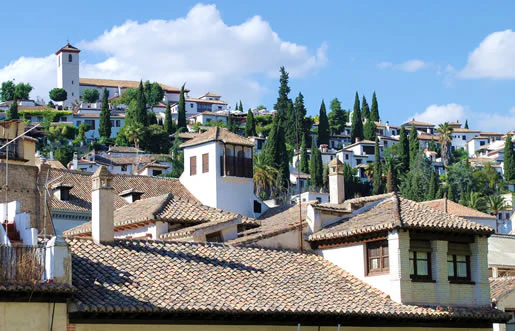A perfect weekend: top things to do and see in Granada
Day 1. Friday afternoon.
Carrera del Darro, Paseo de los Tristes and Albaicin.
We start our tour in Plaza Nueva, the oldest square in Granada. It has been a meeting place for the people of Granada in all ages. This square was built on the vault of Darro river and it is surrounded by very important buildings and streets. The Real Chancillería Palace is in the middle of this square and was built between 1531 and 1587.
Diego de Siloé and Francisco Castillo el Mozo, renowned Renaissancen architects, designed it. They are the authors of the patio and the facade respectively. In this same place is the church of San Gil and Santa Ana. This temple houses important religious imagery works belonging to the baroque sculptor José de Mora. In addition, this church is a resting place for distinguished people of Granada.
We continue our itinerary through Carrera del Darro. This street is one of the narrowest streets in the city, because is next to the river bank. On the right and over our heads is the “eighth wonder of the world”: the Alhambra, on top of Sabika hill.
While we walk, we can appreciate the beauty of this part of Granada: on both banks there are many houses, some of them are Moorish and converted in hotels; others with suspension balconies on the Darro river. All this, together with the architecture and the stone pavement, forms the magnificent image of the place, also colored by the green of the vegetation which surrounds the river.
Cadí Bridge or Puerta de los Tableros is in the Darro. Although at present only a small part is preserved, during the eleventh century onwards it was one of the access doors to the Alcazaba. There are still some parts of the horseshoe arch which worked as a gate and whose bars prevented the passage of intruders. There, a spiral staircase which led to the riverbank to collect water is inside.
Opposite this small fragment of the zirí history of Granada are the Arab baths of Bañuelo: one of the most historic monuments in Granada and the best-preserved Arab baths in Spain.
The church of San Pedro and San Pablo is one of the mudejar temples in Granada. From its outdoor patio there is a magnificent panoramic view of the Darro river and the Sacromonte.
Opposite this church is the Archaeological Museum. This museum houses a large number of archaeological remains which help trace the history of the province. It is located in a Renaissance palace, Castril House, which was owned by Hernando de Zafra, secretary of the Catholic Monarchs. If we look at its facade, we will observe a walled balcony on the second floor. An inscription reads on this: "Waiting for the one from heaven". The legend says that the sentence has to do with a disagreement between the lord of the house and one of the servants, who was hanged on this balcony. The inscription could refer to "waiting for divine justice."
After our stop at Castril House, we continue our walk until we reach the Paseo de los Tristes. The word ‘Tristes’ means ‘sad’, so the name of this place is related to the funeral processions which passed through this street to access the cemetery of San José in the 19th century. In the right corner of the promenade you can see the Chirimías House, built in the 17th century for the concerts which the musicians offered from the viewpoint of the building. The Chirimías House was one of the first buildings to introduce the baroque in Granada.
There is a bridge which connects the Chirimías House with the other side of the river. This bridge is also known as Chirimías Bridge. This is one of the fourteen which cross the Darro and originally the Arabs called it Qantarat Inb Raxiq. It had to be rebuilt in 1882.
From this river bank you can see the closed and fenced Bosques de la Alhambra Hotel. This building dates from the 19th century. Its situation in the shady and on the banks of the Darro made the building an inconvenient place for lodging. After its closure, the building served as a hospital, meeting place for masons or dressing room of actors.
In a cross street, is the Horno del Oro House. This building is a typical Andalusian house which preserves very well its patio with pool and the rest of rooms. The second floor is a later construction, since it has clear influences of the Castilian domestic architecture.
At the end of the Paseo de los Tristes is the Cuesta del Chapiz. From this steep street you can access the Albaicín. During our climb, we will find Chapiz houses, of Moorish origin, dated in the 14th century and connected by an arch. Materials from other buildings such as columns and arches were used for its construction. This place is the point of confluence of the entrance to the Albaicín Alto and also to the Sacromonte.
Facing the road which takes us to the Sacromonte we will find Peso de la Harina Square, place where wheat was weighed during the 17th century before being ground to avoid miller’s fraud.
In our walk through the Albaicín we will encounter a large number of aljibes, small or large water tanks built during the Muslim stage of the city. These "wells" were built both for water supply and for ablutions, since most of them were next to mosques. The first that we will find in our ascent will be precisely the cistern of the Peso de la Harina. Later we will find another one, the aljibe of El Salvador, annexed to the church of the same name. This church was built on the main mosque of Granada and retains its beautiful original patio.
We continue our itinerary through of main streets of the Albaicin: Pagés Street. Here, we can find different establishments such as banks or bars, in addition to one of the most famous Moorish houses in Granada, the house of the Mascarones, named for the two stone masks of its facade. It is currently a private property which cannot be visited.
Our next stop is the church of San Bartolomé. The most striking of this temple is that it still conserves in its subsoil the cistern of the primitive mosque which occupied this place.
Very close to this temple is Plaza Larga, the nerve center of the Albaicín. In one of the ends of this square the arch of the Pesas is located, one of the doors of the disappeared wall of the Qadima Alcazaba.
Just one street from Plaza Larga is the Dar-al-Horra Palace. This place was the residence of the mother of the last king of Granada: Aixa had been repudiated by her husband and she was ordered to leave the Alhambra. This palace is one the best examples of Nasrid civil architecture in Granada.
Finally, and to finish our first walk in Granada, we will visit one of the main tourist attractions of the city: San Nicolás viewpoint. It is a wonderful place to finish the day, since observing how the afternoon falls on the Alhambra is one of the most beautiful images in the world.
And, from here, our return to the city center begins. We recommend you go down Calderería Vieja or Cuesta de San Gregorio. This street was in the past one of the most comercial areas of the city. You can buy souvenirs in its small shops or have tea and pastries in one of the many Arab tea houses are there.
If you prefer to visit the Albaicin accompanied by a professional guide, we also propose different options for guided tours in Granada.
Day 2. Saturday morning.
Alhambra, the Generalife, surroundings and Realejo.
The Alhambra, “Red Castle”, was named in this way due to the reddish colour of its walls. It is the most important work of European Islamic architecture. The fortress is recorded for the first time in the ninth century, but it is in the twelfth and thirteenth centuries when the monument reaches its greatest splendor with the Nasrid dynasty. Later, the Emperor Carlos V, fascinated by the city, struggled to beautify it and he also ordered to build a palace to establish his residence in Granada.
The Generalife was the palace which served as a resting place for kings. It is on the parallel hill to the Sabika and was designed as a place similar to the Mohammedan paradise: numerous pools and patios where the sound of water and birds is mixed with the scent of flowers which fill the gardens.
The Alhambra treasures many centuries of history and beauty in each of its rooms. For this reason, it is one of the most visited monuments in the world. To guarantee its conservation, the daily number of visitors was limited. So, to avoid queues and crowds, we recommend a guided visit to the Alhambra with a monument specialist so you can get to know it in depth. In addition, a guided tour will allow you a better organization of the rest of your day in the city.
You may join a guided group tour or book an Alhambra and Generalife private guided tour with an exclusive guide for your family and friends.
Less than five minutes from the Alhambra is the Carmen de los Mártires, another of the emblematic places of Granada. A carmen is a palace, a typical house in Granada. This building has a lake and it was built in the 19th century. In its lands there are various types of gardens where some peacocks live.
Very close to this carmen is the Rodríguez-Acosta Foundation, reached by Niño del Royo Street. The painter José María Rodríguez-Acosta built this carmen on a plot near the Alhambra with a curious mix of architectural styles. The idea of the painter was to create a place to find inspiration for his work. The collection of works by the painter, its small museum which houses archaeological and artistic pieces from different centuries, its magnificent library and the Arabic basements are so interesting.
The Torres Bermejas are only two minutes away from the Carmen Rodríguez-Acosta. They are three large towers which were part of one of the city's defensive systems during the Zirí era. This fortification has had different uses throughout history.
We continue our walk down the streets Aire Alta and Azacayuela Alta. Then, we will arrive to the Lavadero del Sol, in the highest part of the Jewish quarter: Realejo. This old washing place, originally from the 17th century, is located in a square of the same name and was in use until 1965.
We will begin our descent through the streets Alamillos de San Cecilio and Cuesta del Realejo to finally arrive at Campo del Príncipe, one of the most beautiful squares in Granada and Realejo. Its name has to do with the reform of this ancient Arab square on the occasion of the wedding of Prince Don Juan at the end of the fifteenth century. In addition, few know that under it is a large Muslim cemetery. Today, it is one of the liveliest places in the city, since at one of its ends there are many bars and terraces.
We suggest you have lunch at one of the restaurants and enjoy the cheerful atmosphere of the square.
Saturday afternoon.
Realejo and historic center.
We restart our tour through Molinos Street until we reach the Santo Domingo Square. The church of Santo Domingo is in this place, founded by the Catholic Monarchs and one of the main exponents of the Christian Realejo. We continue walking through the old Jewish quarter of Realejo until we reach the palace of the Cuarto Real de Santo Domingo. This building, from the 19th century, is surrounded by beautiful gardens and it has been open to the public recently. However, the highlight of the complex is that the old palace has a qubba inside, an Islamic oratory which was part of the primitive Islamic orchard which was there.
After our visit to the Cuarto Real de Santo Domingo, we will take Ancha de la Virgen Street to reach one of the most famous and beloved streets by the people of Granada: Carrera de la Virgen Street. The Basilica of Nuestra Señora de las Angustias, patron saint of the city besides San Cecilio, is in this boulevard full of poplars.
From here we will continue our walk through the city center. Our next stop is Oficios Street. In this area are the most important monuments of the historic center: the Madraza, the Royal Chapel, the cathedral, the Alcaicería and the Corral del Carbón.
The cathedral was built in Renaissance style and was initially designed by architects Gil de Hontañón and Enrique Egas, who designed a Gothic-style temple. After a visit of Emperor Carlos V, he decided to take a different and more modern approach than his grandparents had thought for the Royal Chapel. This chapel dates from 1505 and there the Catholic Monarchs lies in a crypt on which are their graves, sculpted in Carrara marble.
Following the new ideas of the emperor, the main architects were removed from the project and replaced by the Renaissance Diego de Siloé, whose thinking was closer to that of King Carlos I. Later, the baroque artist Alonso Cano joined the works of construction of the cathedral and designed the facade. Alonso Cano also made some sculptural and pictorial works which are in the temple.
Opposite the Royal Chapel is the Madraza Palace, which housed the old Islamic university of Granada. The initial building was remodeled many times over time and there is hardly anything original left. However, the beautiful room of the oratory is conserved and also some remains of the facade in the Archaeological Museum.
On one side of Oficios Street and in front of the cathedral is the entrance to the Alcaicería, an Arab souk that originally was specialized in luxury products such as silk or velvet. Today, we can find in their stores ceramic and taracea items, and other things such as jewelry or books.
The Corral del Carbón was built during the Nasrid era to store merchandise and also to sell them right there. It was a place of shelter of merchants and later a corral de comedias, a type of open-air theatrical courtyard. This alhondiga is the best preserved in the Iberian Peninsula.
If you want to know more about the main monuments of the historic center, you can book a guided tour in Granada.
Very close, near Plaza Nueva, you can find a lot of tapas bars and restaurants to have dinner. A flamenco show in the Albaicin or Sacromonte would be the perfect ending for this day.
Day 3. Sunday.
Sacromonte.
We can walk to the Sacromonte from Plaza Nueva. This walking tour would last 25 minutes approximately. Another option to reach the Sacromonte is by bus: we can take the C34 bus line in Plaza Nueva or Gran Vía.
The Sacromonte quarter is full of caves which their neighbours have lived in for centuries. Some of them are tablaos where we can enjoy flamenco shows. In addition, we can go to the Sacromonte Caves Museum and visit the Sacromonte Abbey.
The visit to the museum is very interesting. During the tour we will see ten caves and the tour guides will explain to us how the life of their first inhabitants was and the crafts they performed (pottery, basketry, loom...).
The Sacromonte Abbey is another of the most interesting places in Granada. A very important part of the city's history is related to this 17th century religious building.
Finally, we invite you to contemplate the panorama of Granada, the Alhambra and Sierra Nevada from Mount Valparaíso, where the Sacromonte stands on.
Read more about...
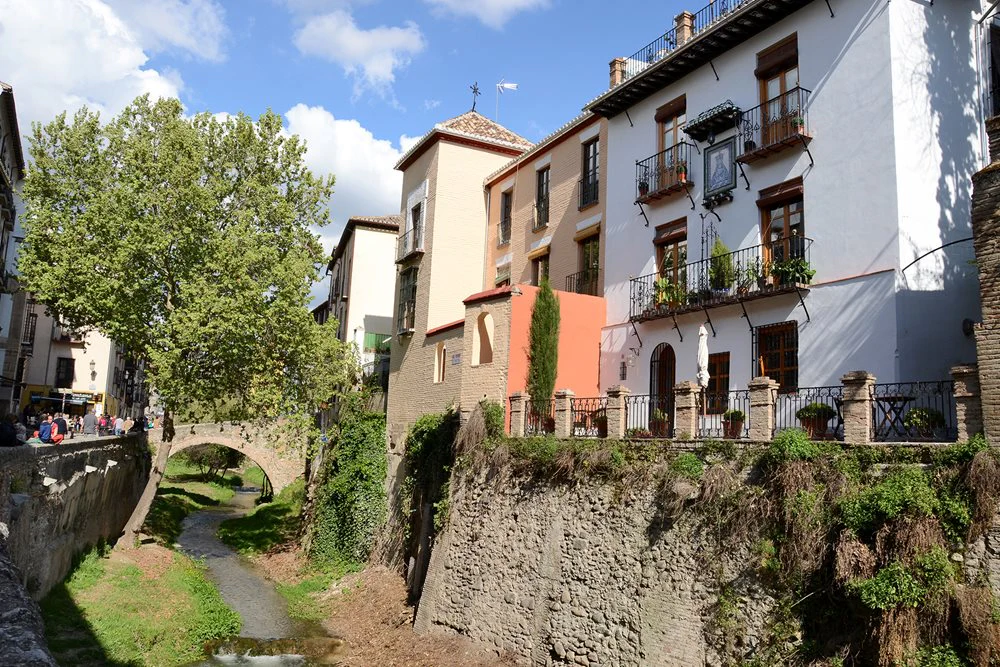
Carrera del Darro
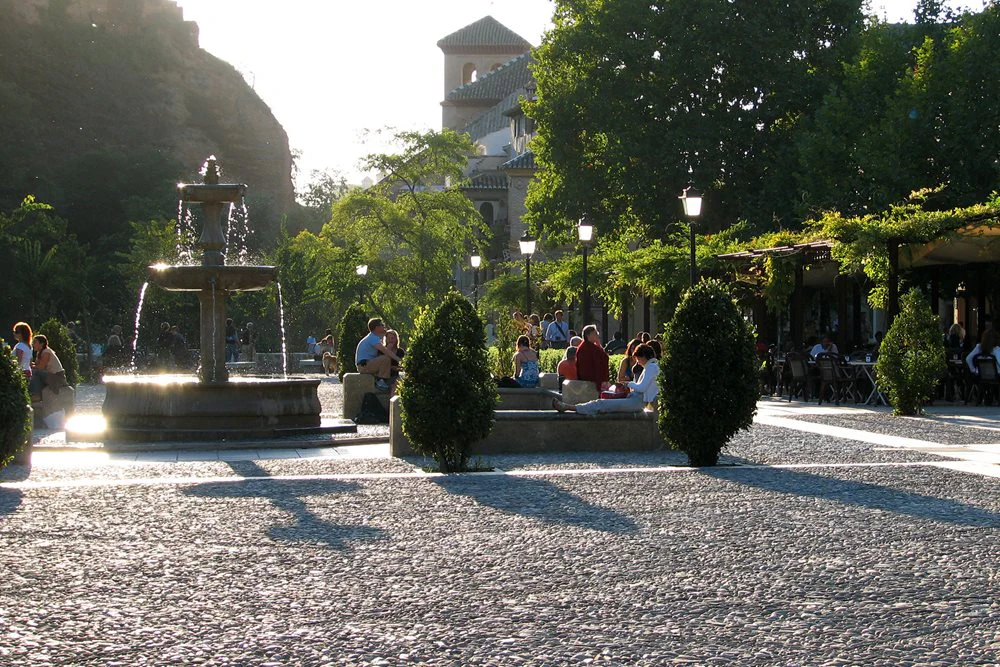
Paseo de los Tristes
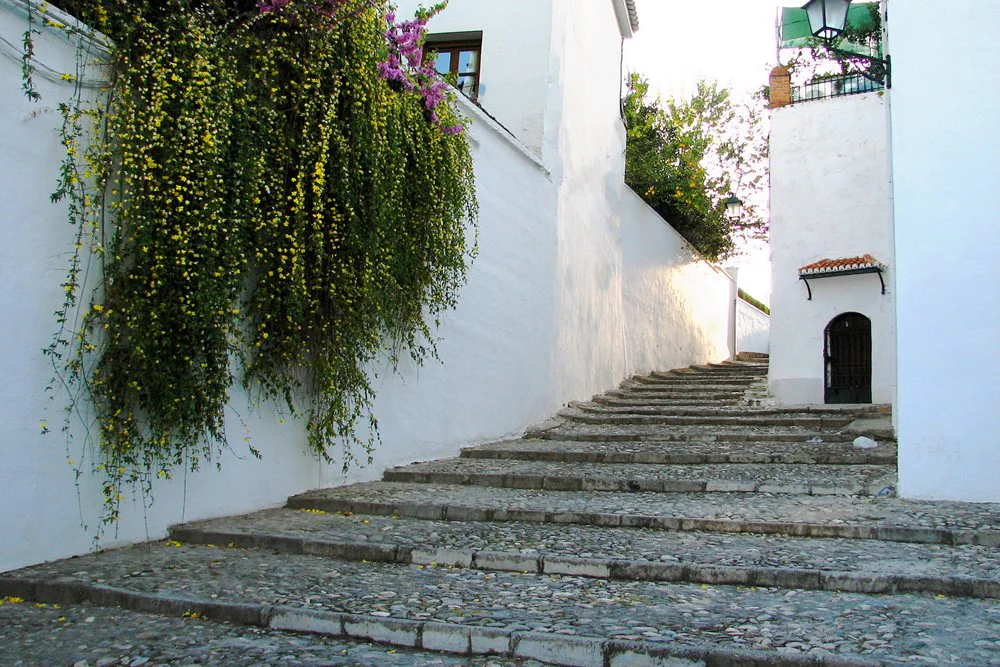
Albaicín
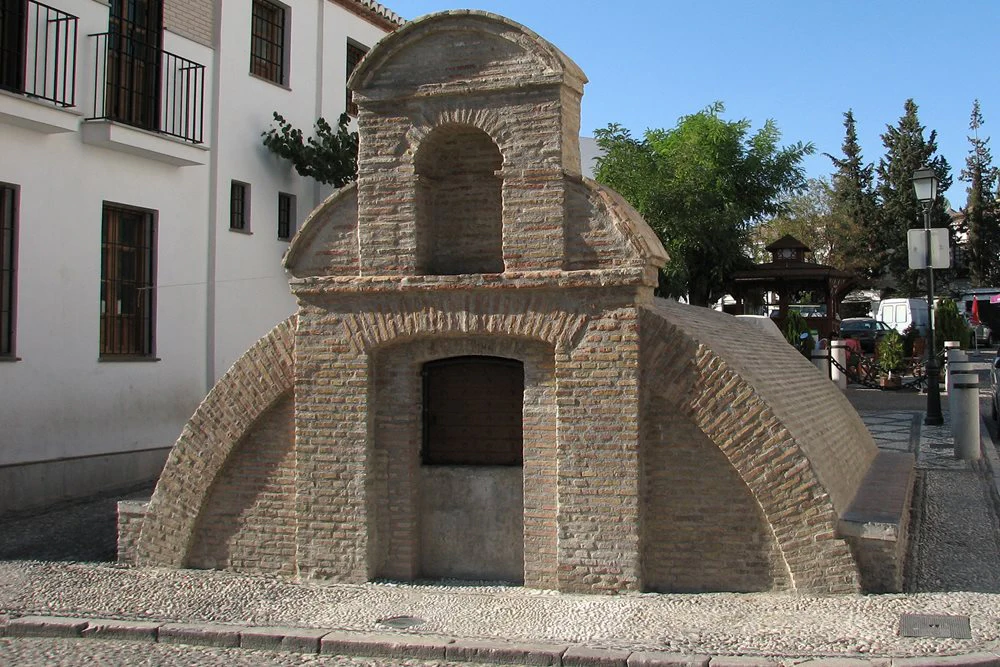
Aljibe de San Nicolás
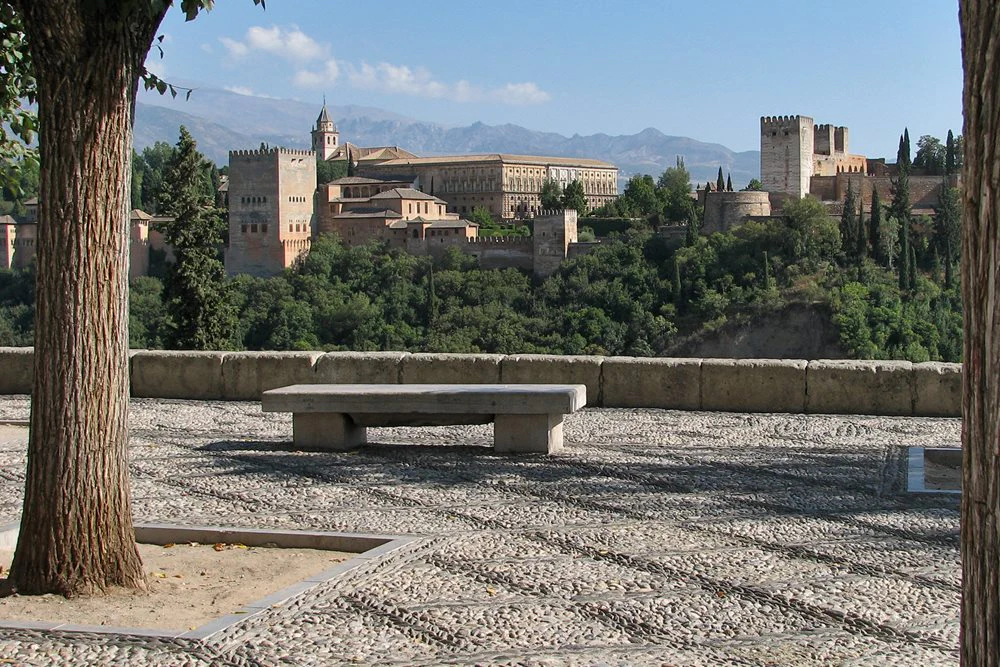
San Nicolás viewpoint
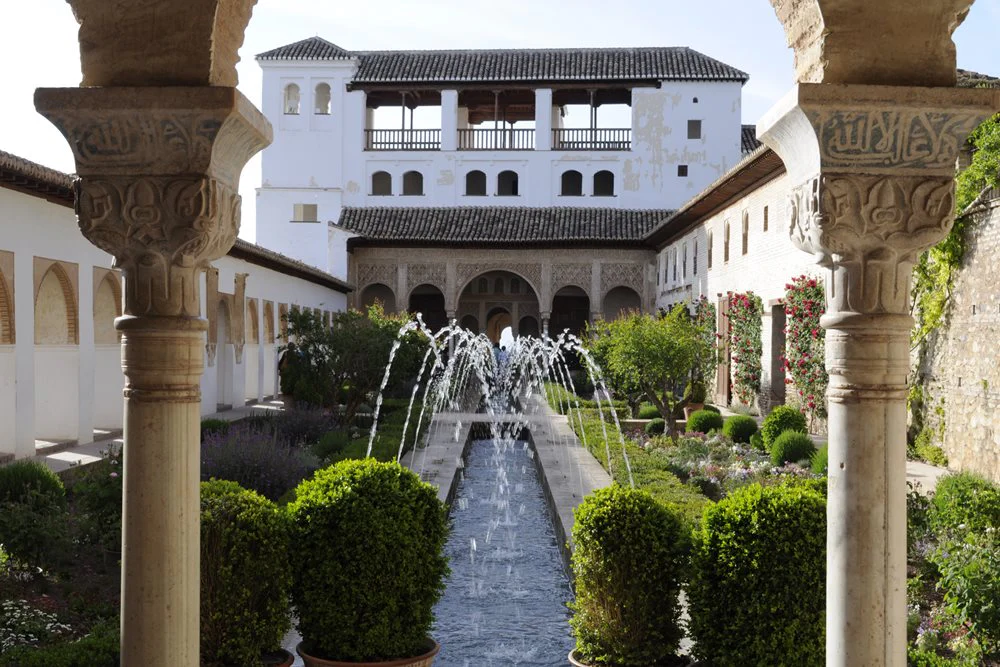
Patio de la Acequia in the Generalife
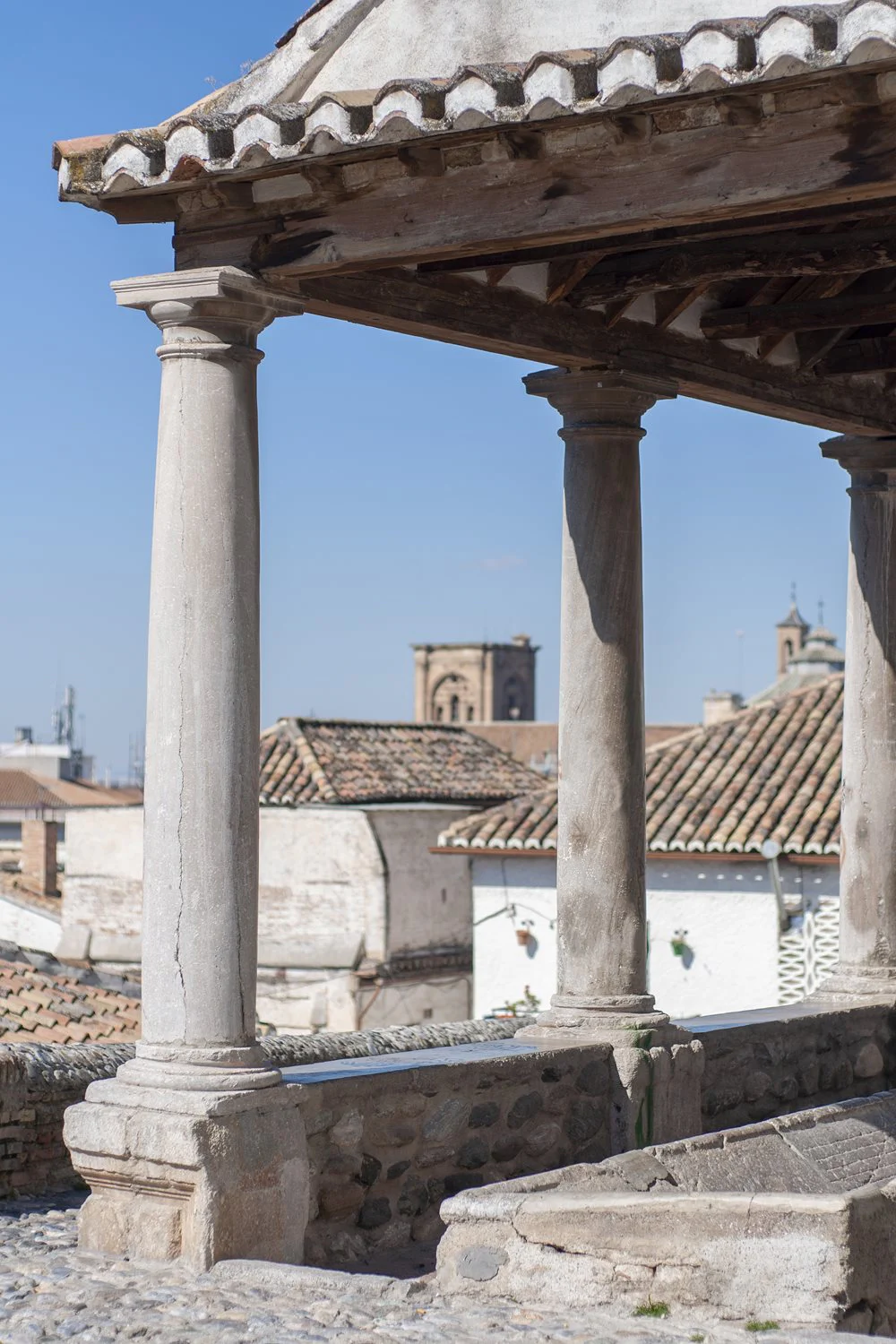
Lavadero del Sol
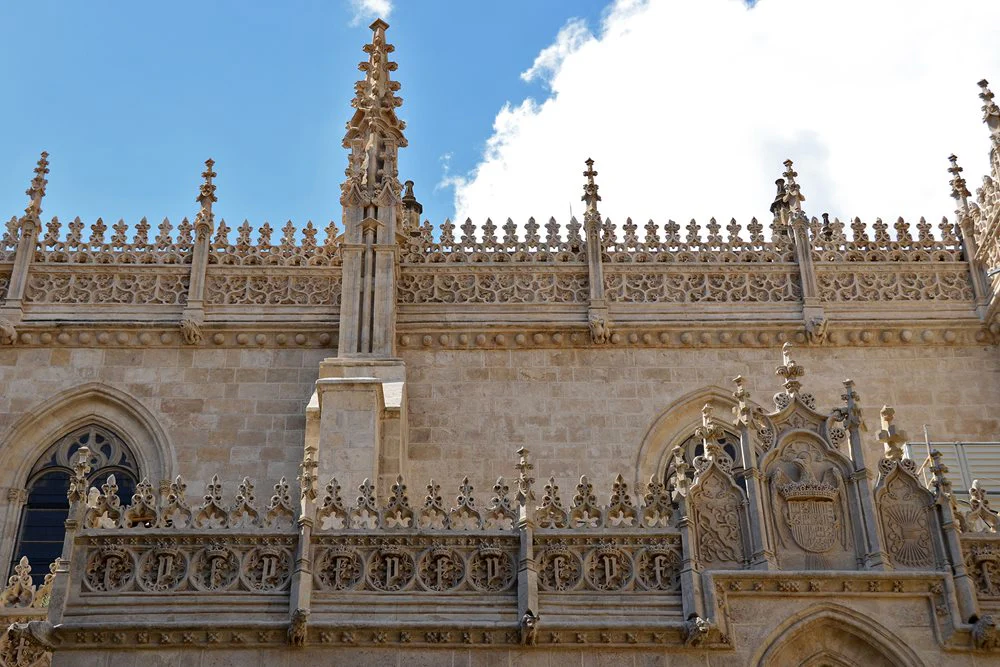
Royal Chapel


